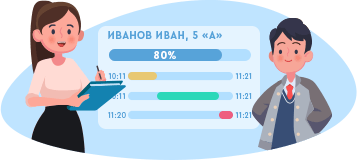Hello, guys! My name’s Max. Together we’ll discover new Grammar and revise the rules which you’ve already learnt before. I have a few friends to help me fulfill the task.
Bella is a smart and curious student. So, every time when you see this sign ______ pay attention to the given information or be ready to answer the question.
Charlie will help you practice the rules so that you could feel comfortable and confident in any situation.
Together we’ll make our lessons useful and enjoyable.
I’m into listening to rock music and when I was fifteen, I went to a music festival with my brother and his friends. We arrived on Friday evening, looked at the programme and decided to go to the Main Stage to hear U2. As we were walking across the park, there was a flash of lightning. A storm was coming, although it wasn’t raining yet. When we reached the Main Stage, U2 had started playing.
We were all really impressed with the band. I’d watched a few of their songs on YouTube, hadn’t seen them live. Their show was amazing! By this time, it was raining hard, but we didn’t mind.
In fact, it made the atmosphere more dramatic. Thousands of people were cheering and dancing in the rain! Then suddenly the music stopped. The water had damaged the sound equipment!
Look at the highlighted verbs in the text. What tense are they, Past Simple, Past Continuous or Past Perfect?
Was, went, arrived, looked, decided, reached, were and stopped are the affirmative forms of the Past Simple Tense.
Were walking, was coming, was raining and were cheering are the affirmative forms of the Past Continuous Tense.
Had started, had watched and had damaged are the affirmative forms of the Past Perfect Tense.
Let’s start with the Past Simple.
We form the Past Simple with the help of regular verbs by adding –ed to the main verb or irregular forms of the main verb (using the list of irregular verbs or learning them by heart). We form questions and negations with the help of auxiliary verb did / didn’t.
We form negations by putting not after did – did not or didn’t for short.
Can you find the examples of negative past simple forms in the text? – Yes, there’s only one – didn’t mind.
To make a question we put did before the subject.
Remember! In questions and negations, we take the first form of the verb.
Past Continuous
We form the Past Continuous with the verb to be and the main verb with the –ing suffix.
If we talk about one person (I, he, she it) we take was and we use were for you / we / they.
I was playing. or They were playing.
Look through the text again. Can you see the examples of negative past continuous forms in the text? – Wasn’t raining.
To make negatives we need to put not after was/were – wasn’t/ weren’t for short.
We form questions by putting was/were before the subject.
Now let’s revise the formation of the Past Perfect.
We form the Past Perfect Tense with the help of HAD and regular forms of the main verb (by putting the ending –ed to the main verb) or irregular forms of the main verb (using the list of irregular verbs or learning them by heart).
And again, find a negative example of the Past Perfect. – Right, hadn’t seen.
We form negations by putting not after HAD (had not or hadn’t for short).
We form questions be putting HAD before the subject.
Now let’s revise the USE of past tenses.
Listen and complete the names of tenses.
1. We use the ___________ to talk about a complete action in the past.
Then suddenly the music stopped.
2. The _____________ is used for an action which was in progress at a stated time in the past. We do not mention when the action started or finished.
Thousands of people were cheering and dancing in the rain!
3. We use the ____________ for one past action which happened before another past action or a stated time in the past. The action that happened earlier in the past (“older action”) is in the ____________ and the action which happened later (“younger action”) is in the ____________.
When we reached the Main Stage, U2 had started playing.
4. We often use the____________ to talk about the actions which happened one after the other in the past.
We arrived on Friday evening, looked at the programme and decided to go to the Main Stage to hear U2.
5. The _________ is used for an action which finished in the past and whose result was visible in the past.
6. The __________ shows two or more actions that were in progress at the same time.
I was jogging while my brother was walking our dog.
7. The __________ is the past equivalent of the Present Perfect.
Compare these two sentences.
There was no cake left; he had eaten it all.
(The action had eaten happened in the past and the result There was no cake left was visible in the past, too.)
There is no cake left; he has eaten it all.
(The action has eaten happened in the past and the result There is no cake left is still visible in the present.)
8. We use the___________ to talk about the lives of people who are no longer alive.
Albert Einstein made a lot of scientific discoveries.
9. The _____________ is used to describe the atmosphere, weather or place before we describe the main event.
A storm was coming, although it wasn’t raining yet.
10. We use the _____________ for an action or event that interrupted a background event; we use the ______________ for the background event.
As we were walking across the park, there was a flash of lightning.
Learn this! We use:
when + Past Simple
while + Past continuous
Do not forget about the time markers that help us to define the tense.
Time expressions used with the Past Simple include:
yesterday
last night/week/month/year
two days/weeks/months ago
then
when
How long ago...?
in 1992/1845
The Past Continuous is used with the following time expressions:
while
when
as
all day/morning yesterday
at noon yesterday
the whole night yesterday
from 5 to 6 yesterday
The Past Perfect is used with: for, since, how long, before, after, ever/never, by the time.
That`s all for today.
I hope, the information was useful to you.
Join us at our grammar lessons at videouroki.net and you’ll realize that grammar can be easy and enjoyable!

 Получите свидетельство
Получите свидетельство Вход
Вход





 1104
1104


